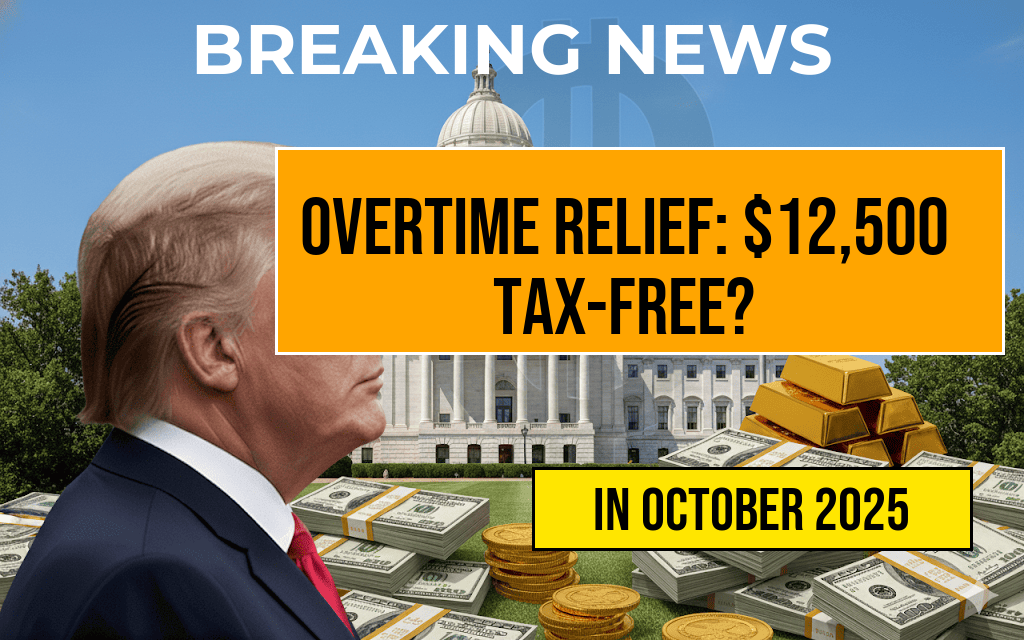Retirees with low incomes are set to benefit significantly from a recent enhancement to the tax deduction system, which now offers an additional $4,000 deduction for qualifying seniors. This adjustment aims to ease the financial burden on older Americans during retirement, potentially resulting in tax savings exceeding $400 for many. The change is part of ongoing efforts to support vulnerable populations amid rising living costs and inflationary pressures. Eligible seniors can now leverage this increased deduction to reduce taxable income, opening doors to greater savings and improved financial stability in their later years. As the IRS updates its guidelines and forms, retirees are encouraged to review their eligibility to maximize benefits and ensure proper filing. This development underscores the importance of understanding available tax provisions tailored specifically for low-income seniors, ensuring they receive the assistance needed to maintain their quality of life.
Understanding the New Deduction Boost
Who Qualifies for the Increased Deduction?
- Age requirement: Typically, individuals aged 65 and older qualify.
- Income limits: The deduction is targeted at low-income seniors, with specific income thresholds set annually by the IRS.
- Filing status: The benefit applies to taxpayers filing as single, head of household, or married filing jointly, provided they meet income and age criteria.
Details of the Deduction Enhancement
The IRS has increased the standard deduction for seniors by $4,000, an adjustment designed to offset rising living expenses. Previously, the deduction was lower, but with this increase, qualifying taxpayers can subtract a larger amount from their gross income, reducing their overall tax liability. For example, a senior with taxable income of $20,000 could now see their taxable income drop to $16,000, leading to notable savings depending on their tax bracket.
Potential Tax Savings and Impact
Taxpayers who qualify for the full $4,000 deduction could see their tax liability decrease by more than $400. This figure is based on the typical marginal tax rate applicable to low-income retirees, which often falls within the 10% or 12% brackets. For instance, a $4,000 deduction at a 10% rate results in a $400 reduction in taxes owed, effectively boosting disposable income for essentials like healthcare, housing, and groceries.
Sample Calculation of Savings
| Taxable Income Before Deduction | Deduction Amount | Tax Rate | Estimated Tax Savings |
|---|---|---|---|
| $20,000 | $4,000 | 10% | $400 |
| $25,000 | $4,000 | 12% | $480 |
How to Claim the Deduction
Steps for Eligible Seniors
- Gather relevant documentation such as proof of age, income statements, and previous tax returns.
- Review updated IRS guidelines on deduction limits and income thresholds, available at irs.gov.
- Complete the appropriate tax forms, typically Form 1040 or 1040-SR, ensuring the new deduction amount is accurately reflected.
- Consult with a tax professional if uncertain about eligibility or filing procedures to maximize benefits.
Additional Support for Low-Income Retirees
Beyond the increased deduction, numerous programs aim to assist low-income seniors, including the Supplemental Security Income (SSI), Medicaid, and various local aid initiatives. These programs work in tandem with tax policies to bolster financial security among vulnerable populations. Experts suggest that retirees should regularly review their eligibility for these programs, especially as income levels and circumstances change over time.
Implications for Policy and Retirement Planning
The boost in the senior deduction reflects a broader recognition of the financial challenges faced by retirees on fixed incomes. Policy analysts emphasize that such measures can mitigate the impact of inflation and rising healthcare costs, which disproportionately affect low-income seniors. Financial planners advise retirees to incorporate these tax benefits into their retirement strategies, ensuring they optimize their income and minimize tax burdens.
For more information on tax benefits for seniors, visit Investopedia or the Social Security Administration.
Frequently Asked Questions
What is the new deduction boost available for low-income seniors?
The new policy provides a $4,000 deduction boost specifically for low-income retirees, helping to reduce their taxable income and increase potential tax savings.
How much can seniors potentially save on taxes with this increase?
Seniors could see tax savings exceeding $400, depending on their overall income and tax bracket, making a significant difference in their retirement finances.
Who qualifies as a low-income retiree for this deduction boost?
Qualifying low-income retirees typically include seniors with limited income sources, such as Social Security, pensions, or other retirement benefits, meeting specific income thresholds set by tax authorities.
When does this deduction boost take effect?
The deduction increase is effective starting from the current tax year, providing immediate benefits to eligible seniors when filing their taxes.
Are there any additional benefits or considerations for seniors claiming this deduction?
In addition to the $4,000 deduction boost, seniors should review other available tax credits and deductions to maximize their savings and ensure compliance with tax regulations.






